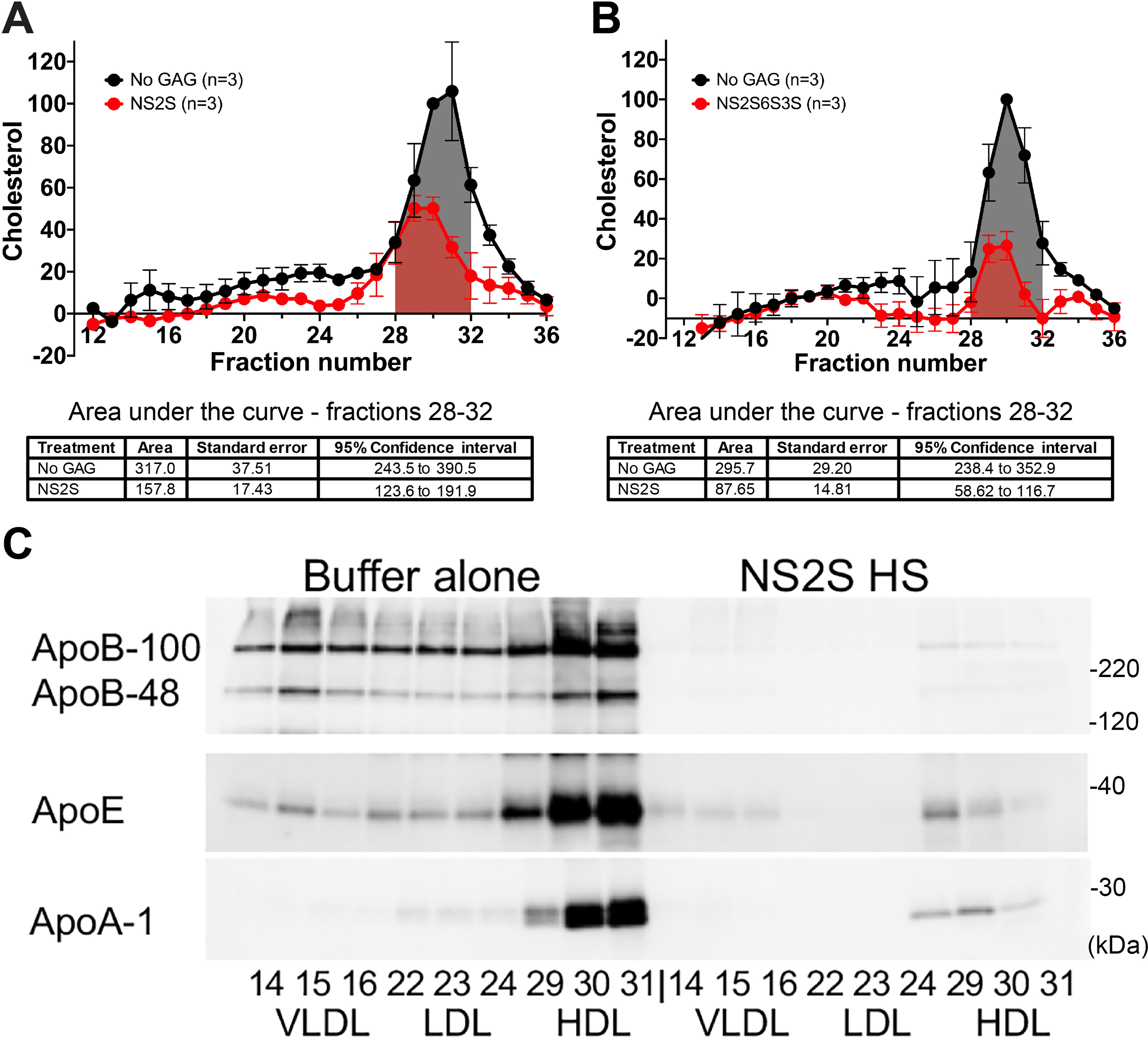Figure 4.

Short glycosaminoglycans (NS2S or NS2S6S3S 12-mers) can be used to remove cholesterol from aged human BrM donor tissue. A, 6-mm diameter BrM tissue explants (five per treatment) were incubated in a hypotonic solution overnight at +4 °C to lyse any cells, washed thoroughly, and then incubated overnight at +4 °C in a well of a 96-well plate with either 100 μl of buffer or buffer containing 16 μg of the HS NS2S 12-mer. B, tissue from a different donor was treated with 16 μg of the HS NS2S6S3S 12-mer or buffer alone. A and B, after extensive washing, each tissue sample was homogenized in 80 μl of RIPA buffer. Forty μl of samples from each treatment group was pooled and separated by FPLC on a Superose 6HR 10/30 column with PBS + 1 mm EDTA, and cholesterol was measured in each fraction. These experiments were repeated with tissue from three different donors (Table S1E) for each type of HS 12-mer. The cholesterol content was normalized in each experiment to the HDL peak fraction (fraction 30) in the No GAG sample to compare experiments. Mean and S.E. bars for three separate experiments are indicated. Area under the curve was measured for the HDL-containing fractions 28–32 using the AUC function in GraphPad Prism 8.4.2 (San Diego, CA) and is shown in tables below the graphs. Treatments with short GAGs removed cholesterol in a statistically significant manner as demonstrated by the nonoverlapping 95% confidence intervals. C, a representative Western blotting analysis of the fractions containing VLDL (14–16), LDL (22–24), and HDL (29–31) revealed that most of the apolipoproteins were removed after treatment with both the NS2S and NS2S6S3S 12-mer.
